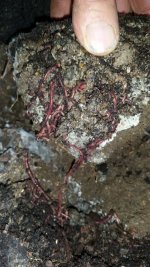http://www.spectrumanalytic.com/support/library/ff/Soil_Aluminum_and_test_interpretation.htm1. Do Not Use Mehlich 3-Al To Evaluate Potential Al Toxicity. It is only used to convert Mehlich 3-P into Morgan-P
2. When the soil pH is below 5.0, soluble Al is almost certainly a problem.
3. When the soil pH is between 5.0 and 5.5, soluble Al likely a small problem
4. When the soil pH is between 5.5 and 6.0, soluble Al is not likely to be a significant problem
5. When the soil pH is above 6.0, soluble Al is almost certainly not a problem.
1. Lime is the solution to excess soluble Al in the topsoil
2. Gypsum may be needed to correct excess soluble Al in the subsoil
Goose came out a bit tough. I put it in the pressure cooker with a little stock and it came out perfect.



